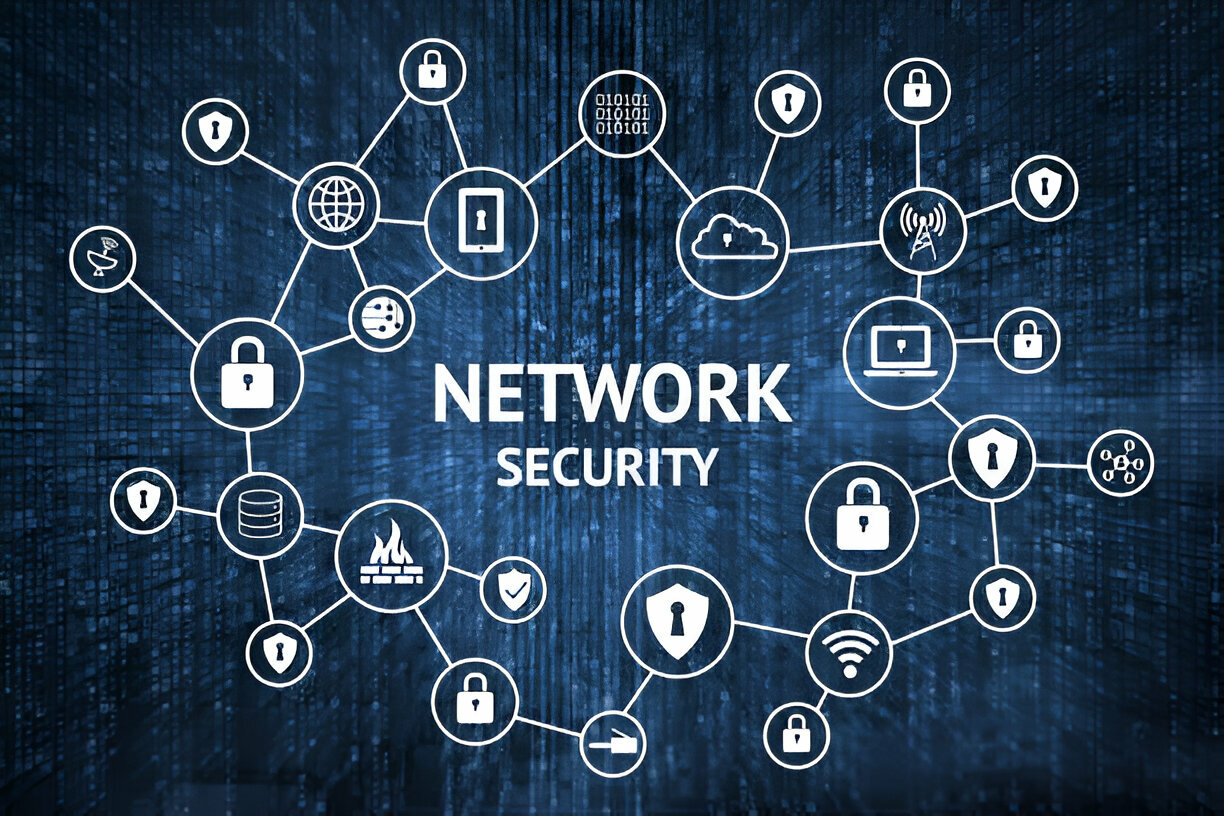In the 21st century, companies benefit from the network for various needs, like data storage, communication with customers, and managing daily business activities. Nevertheless, it is also a disadvantage, as a high dependence on technology results in hackers looking to commit cybercrime against a business.
One method for preventing cyber threats is to develop a network security strategy in advance of problems. This blog will provide crucial details on the strategies for protecting your business’s computer network.
1. Implement Strong Password Policies
Hackers usually attack company networks through guesswork. A weak, complex password allows easier network access, whereas strong passwords add security to networks. A typical password policy should be as follows:
- Use strong passwords with uppercase and lowercase letters, numbers, and special characters.
- Change your password often (the life of the password should be 60-90 days).
- Multi-factor authentication methods such as fingerprint scanning would be an added layer of security.
- Stop using the same password for many of your accounts.
2. Keep Software and Systems Updated
An outdated operating system or software is a real danger to your business. They come across bugs that can allow unauthorized access to your business data. Efficient strategies to recover from such an event are as follows:
- Enable the automatic server updates for the operation systems, applications, and security software.
- Thus, according to the set bug lists, the company’s objectives are met regularly by applying security patches to third-party applications.
- Switching to newer technologies and operating systems with identical purposes is required rather than the old and famous alternatives that lack developer support.
You can also get the best IT solutions services in Rockford, which could include custom-built security software specifically for your business.
3. Install and Configure a Firewall
Firewalls, among other security measures, also play a crucial role in preventing cyber crimes since their action is controlling and identifying traffic that enters or leaves a network. A company should:
- Take the use of enterprise-level firewalls and be sure they have IDS/IPS for security.
- Access controls will be employed to permit only essential assenting network segments that are the hub for the systems is necessary because they break an attack to a small part of the hard drive that holds a system, causing less damage.
Suppose your business does not have a dedicated IT department. In that case, you can look for the top IT consulting company in the USA that can cater to your IT needs, including firewall implementations.
4. Use Encryption for Data Protection
Data encryption is a sure way of ensuring that hackers cannot get at your information even if they have accessed your network. The guidelines for companies are:
- The sensitive information is kept secure when sending emails and files by enabling end-to-end encryption.
- Use full-disk encryption technology to protect your company’s laptops and mobile devices.
- Store and encrypt customer and sensitive financial information in databases and other systems that cannot be easily decrypted.
5. Secure Wi-Fi Networks
It is known that only public Wi-Fi networks help malicious software to invade wherever, and unsecured Wi-Fi networks are the ones that are most likely to be the targets of a hacker invading your business. To keep your business network safe:
- Make use of WPA3 encryption in the wireless network.
- You must change the SSID (the network’s visible name) to prevent unauthorized personnel from accessing your Wi-Fi.
- By setting up a guest Wi-Fi network that differs from the central business network, you can limit outsiders’ access to your company’s central server containing licenses.
- Changing passwords and limiting the admittance of only authorized persons are the means of security currently in place.
6. Implement Access Control and Least Privilege
Every employee should not have the right to enter all systems or files. Setting up role-based access control (RBAC) guarantees that individuals can access only the resources they need in their workplaces. What are the best practices?
- Assigning varying access levels by varied job roles.
- Using different log-on information for each employee.
- Closing down the access to previous employees right after they have been laid off.
- Acceptance of biometric proof or usage of password tokens for the classy of the highly privileged accounts.
7. Deploy Endpoint Security Solutions
Endpoints like laptops, smartphones, and tablets are the most cyber-attacked. It should be noted that implementing the following measures will help secure these endpoints:
- Getting installed antivirus and malware software.
- Enabling remote-wipe for all lost or stolen devices.
- Using device monitoring and horizontally logging into the device will provide the user with a clear view of the data in all locations and times.
- With USB drives becoming optional, one can avoid data theft and malware infection.
8. Conduct Regular Security Audits and Penetration Testing
The never-ending story of cyber threats requires constant security checks and evaluations, tests which are the one thing that will secure a company. Therefore, it should be:
- Conducting regular vulnerability assessments to detect security weaknesses.
- We are conducting penetration testing to determine whether real-world attacks can be simulated and exploitable gaps can be found.
- Setting up security monitoring tools and configuring them to send alerts during real-time detection of suspicious activities.
It is best to have a third-party software and security company like Singler Tech help conduct the audits since they can be more experienced and thorough in their search for system weaknesses.
Conclusion
Cyber criminals are always inventing new ways to infiltrate computer systems, which is quite tough for businesses. Using the strategies in this blog, your organization is likely to minimize the dangers of cyber-attacks, keep your sensitive data secure, and experience continued operations. There is no need to wait until the attack takes place. Act now to shield your business from cyber threats.







